An Evaluation Approach of Community Emergency Management Ability Based on Cone-ANP
Abstract
1. Introduction
2. Construction of Evaluation Index System for Community Emergency Management
3. Cone-ANP Structure of Emergency Assessment Indicators
3.1. Divide the Taper Element Set
3.2. Dominant Relationship among Indicator Elements of Community Emergency Assessment
3.3. Community Emergency Management Index Cone-ANP Structure
4. Weight Calculation of Community Emergency Management Indicators
5. Analysis on Evaluation Results of Emergency Indicators
5.1. Quantitative Evaluation Results
- (1)
- Determination of the evaluation grade
- (2)
- Quantitative evaluation and scoring
- (3)
- Analysis and evaluation results
5.2. Analysis and Discussion
6. Conclusions
- (1)
- In this paper, Cone-ANP is introduced into the evaluation of the community emergency management index system to avoid the randomness of subjective judgment. According to the index system proposed by experts, an element set is divided to determine the cone-top element and cone-bottom element in the element set. The cone-bottom element also includes receptivity and transition. The mutual dominance relationship between the elements is further determined. The general structure of the cone network analysis method and the calculation method of its weight are fully used to obtain the limit weight vector, and finally the membership degree of each index is calculated.
- (2)
- Based on Cone-ANP, community emergency management should strengthen emergency input, strengthen emergency science publicity and education activities, improve the emergency level of community residents, further increase risk monitoring and early warning, urban lifeline risk prevention and control, and improve community emergency management capacity.
- (3)
- Through the evaluation of community emergency management ability, it can provide an important reference value for the emergency management ability of community emergencies; and provide a basis for the emergency management work of urban management departments, further improve the level of community emergency management, and reduce the casualties and property losses caused by emergencies. It should be noted that the evaluation process of community emergency management capacity is complex and dynamic, and a single method cannot comprehensively assess the overall capacity of the community.
- (4)
- Community emergency management is a systematic and comprehensive work. Any link will lead to accidents. So, for the discovery of relatively weak links, managers must be timely according to the evaluation results, find out the shortcomings in emergency management work, and focus on strengthening.
Author Contributions
Funding
Institutional Review Board Statement
Informed Consent Statement
Data Availability Statement
Conflicts of Interest
References
- Mo, J. Research on the Improvement Path of Urban Community Emergency Cooperative Governance Capability in the New Era 2021 International Conference on Social Science: Public Administration, Law and International Relations (SSPALIR 2021); Atlantis Press: Amsterdam, The Netherlands, 2021; pp. 37–42. [Google Scholar] [CrossRef]
- Cai, M. Analysis on Key Points of Community Emergency Management under Public Health Emergencies. In Proceedings of the 2022 8th International Conference on Humanities and Social Science Research (ICHSSR 2022), Online, 22–24 April 2022; Atlantis Press: Amsterdam, The Netherlands, 2022; pp. 2363–2366. [Google Scholar] [CrossRef]
- Subaiya, S.; Stillman, J.; Pumpalova, Y. A modified Community Assessment for Public Health Emergency Response (CASPER) four months after Hurricane Sandy. Disasters 2019, 43, 206–217. [Google Scholar] [CrossRef] [PubMed]
- Hu, G.; Wang, Z.; Jiang, S.; Tian, Y.; Deng, Y.; Liu, Y. Community public health safety emergency management and nursing insurance service optimization for digital healthy urban environment construction. Front. Public Health 2022, 10, 1032758. [Google Scholar] [CrossRef] [PubMed]
- Gao, H. Emergency Management in Urban China: Comparing the Role of Community Institutions in the Coronavirus Outbreak and in Other Disasters. China Rep. 2022, 58, 336–354. [Google Scholar] [CrossRef]
- Tu, S.; Huang, G. Study of Urban Community Emergency Management in Huizhou, China. IOP Conf. Ser. Earth Environ. Sci. 2022, 973, 012015. [Google Scholar] [CrossRef]
- Mann, N.C.; MacKenzie, E.; Anderson, C. Public Health Preparedness for Mass-Casualty Events: A 2002 State-by-State Assessment. Prehospital Disaster Med. 2004, 19, 245–255. [Google Scholar] [CrossRef]
- Pratama, A.Y.; Sariffuddin, S. Community-Based Disaster Management: A Lesson Learned from Community Emergency Response Management in Banyumas, Indonesia. IOP Conf. Ser. Earth Environ. Sci. 2018, 123, 012003. [Google Scholar] [CrossRef]
- Adini, B.; Goldberg, A.; Laor, D.; Cohen, R.; Zadok, R.; Bar-Dayan, Y. Assessing Levels of Hospital Emergency Preparedness. Prehospital Disaster Med. 2006, 21, 451–457. [Google Scholar] [CrossRef] [PubMed]
- Satizábal, P.; Cornes, I.; Zurita, M.D.L.M.; Cook, B.R. The power of connection: Navigating the constraints of community engagement for disaster risk reduction. Int. J. Disaster Risk Reduct. 2022, 68, 102699. [Google Scholar] [CrossRef]
- Henstra, D. Evaluating Local Government Emergency Management Programs: What Framework Should Public Managers Adopt? Public Adm. Rev. 2010, 70, 236–246. [Google Scholar] [CrossRef]
- Rapaport, C.; Hornik-Lurie, T.; Cohen, O.; Lahad, M.; Leykin, D.; Aharonson-Daniel, L. The relationship between community type and community resilience. Int. J. Disaster Risk Reduct. 2018, 31, 470–477. [Google Scholar] [CrossRef]
- Henderson, L.J. Emergency and Disaster: Pervasive Risk and Public Bureaucracy in Developing Nations. Public Organ. Rev. 2004, 4, 103–119. [Google Scholar] [CrossRef]
- Cheshmehzangi, A. Reflection on Early Lessons for Urban Resilience and Public Health Enhancement during the COVID-19. Health 2020, 12, 1390–1408. [Google Scholar] [CrossRef]
- Feofilovs, M.; Romagnoli, F. Dynamic assessment of urban resilience to natural hazards. Int. J. Disaster Risk Reduct. 2021, 62, 102328. [Google Scholar] [CrossRef]
- Hirchak, K.A.; Leickly, E.; Herron, J.; Shaw, J.; Skalisky, J.; Dirks, L.G.; Avey, J.P.; McPherson, S.; Nepom, J.; Donovan, D.; et al. Focus groups to increase the cultural acceptability of a contingency management intervention for American Indian and Alaska Native Communities. J. Subst. Abus. Treat. 2018, 90, 57–63. [Google Scholar] [CrossRef]
- Dorasamy, M.; Raman, M.; Kaliannan, M. Integrated community emergency management and awareness system: A knowledge management system for disaster support. Technol. Forecast. Soc. Chang. 2017, 121, 139–167. [Google Scholar] [CrossRef]
- Hájek, P. Metamathematics of Fuzzy Logic; Springer: Dordrecht, The Netherlands, 1998. [Google Scholar]
- Aguila-Leon, J.; Vargas-Salgado, C.; Chiñas-Palacios, C.; Díaz-Bello, D. Energy Management Model for a Standalone Hybrid Microgrid through a Particle Swarm Optimization and Artificial Neural Networks Approach. Energy Convers. Manag. 2022, 267, 115920. [Google Scholar] [CrossRef]
- Sobelson, R.K.; Wigington, C.J.; Harp, V.; Bronson, B.B. A whole community approach to emergency management: Strategies and best practices of seven community programs. J. Emerg. Manag. 2015, 13, 349. [Google Scholar] [CrossRef]
- Saaty, T.L. Fundamentals of the analytic network process—Dependence and feedback in decision-making with a single network. J. Syst. Sci. Syst. Eng. 2004, 13, 129–157. [Google Scholar] [CrossRef]
- Saaty, T.L. Theory and Applications of the Analytic Network Process; RWS Publications: Pittsburgh, PA, USA, 2005. [Google Scholar]
- Wu, W.-W. Choosing knowledge management strategies by using a combined ANP and DEMATEL approach. Expert Syst. Appl. 2008, 35, 828–835. [Google Scholar] [CrossRef]
- Yu, R.; Tzeng, G.-H. A soft computing method for multi-criteria decision making with dependence and feedback. Appl. Math. Comput. 2006, 180, 63–75. [Google Scholar] [CrossRef]
- Papageorgiou, E.I.; Groumpos, P.P. A new hybrid method using evolutionary algorithms to train Fuzzy Cognitive Maps. Appl. Soft Comput. 2005, 5, 409–431. [Google Scholar] [CrossRef]
- Huang, C.; Wu, T.; Renn, O. A Risk Radar driven by Internet of intelligences serving for emergency management in community. Environ. Res. 2016, 148, 550–559. [Google Scholar] [CrossRef]
- Li, J.; Li, Q.; Liu, C.; Khan, S.U.; Ghani, N. Community-based collaborative information system for emergency management. Comput. Oper. Res. 2014, 42, 116–124. [Google Scholar] [CrossRef]
- Wood, E.; Frazier, T. Disasters, community vulnerability, and poverty: The intersection between economics and emergency management. J. Emerg. Manag. 2021, 19, 227–233. [Google Scholar] [CrossRef]
- Chen, K.; Yu, X. DEAHP based on ANP weight determination and its application to selection of reverse logistics service pro-viders. In Proceedings of the 2011 IEEE International Conference on Grey Systems and Intelligent Services, Nanjing, China, 15–18 September 2011; pp. 720–724. [Google Scholar]
- Chai, Q.; Xiao, Z.; Gao, J.; Sun, J.; Li, J. A Cone-ANP-based risk assessment study of pipeline. China Saf. Sci. J. 2017, 27, 88. [Google Scholar] [CrossRef]
- Rebhi, W.; Ben Yahia, N.; Ben Saoud, N.B. Hybrid modeling approach for contextualized community detection in multilayer social network: Emergency management case study. Procedia Comput. Sci. 2017, 112, 673–682. [Google Scholar] [CrossRef]
- Tam, G.; Chan, E.Y.Y.; Liu, S. Planning of a Health Emergency Disaster Risk Management Programme for a Chinese Ethnic Minority Community. Int. J. Environ. Res. Public Health 2019, 16, 1046. [Google Scholar] [CrossRef]
- Liu, Z.-G.; Li, X.-Y.; Durrani, D.K. Generating evacuation task plans for community typhoon emergencies: An integration of case-driven and model-driven approaches. Oper. Res. 2019, 21, 745–774. [Google Scholar] [CrossRef]
- Wu, J.; Ni, W.; Yand, S. The Development and Effectiveness Assessment of Comprehensive Disaster Reduction Demonstration Community in China. Journal of Catastrophology. 2019, 34, 184–188. [Google Scholar]
- Wang, K.; Wang, Z.; Deng, J.; Feng, Y.; Li, Q. Study on the Evaluation of Emergency Management Capacity of Resilient Communities by the AHP-TOPSIS Method. Int. J. Environ. Res. Public Health 2022, 19, 16201. [Google Scholar] [CrossRef]
- Liang, M. Community Emergency Management Mode from the Perspective of Holistic Governance: A Case Study of Emergency Demonstration Community in T District. In Proceedings of the 2020 5th International Conference on Modern Management and Education Technology (MMET 2020), Changsha, China, 18–20 September 2020; Atlantis Press: Amsterdam, The Netherlands, 2020; pp. 625–628. [Google Scholar] [CrossRef]
- Zhang, Y.; Ding, Q.; Liu, J.-B. Performance evaluation of emergency logistics capability for public health emergencies: Perspective of COVID-19. Int. J. Logist. Res. Appl. 2022, 25, 1509–1522. [Google Scholar] [CrossRef]
- Cao, R.; Zhao, R. Study on evaluation system of urban community emergency preparedness ability. In Proceedings of the 2017 7th International Conference on Education and Management (ICEM 2017), Shenyang, China, 29–31 December 2017; Atlantis Press: Amsterdam, The Netherlands, 2018; pp. 437–444. [Google Scholar] [CrossRef]
- Schnall, A.; Nakata, N.; Talbert, T.; Bayleyegn, T.; Martinez, D.; Wolkin, A. Community Assessment for Public Health Emergency Response (CASPER): An Innovative Emergency Management Tool in the United States. Am. J. Public Health 2017, 107, S186–S192. [Google Scholar] [CrossRef] [PubMed]
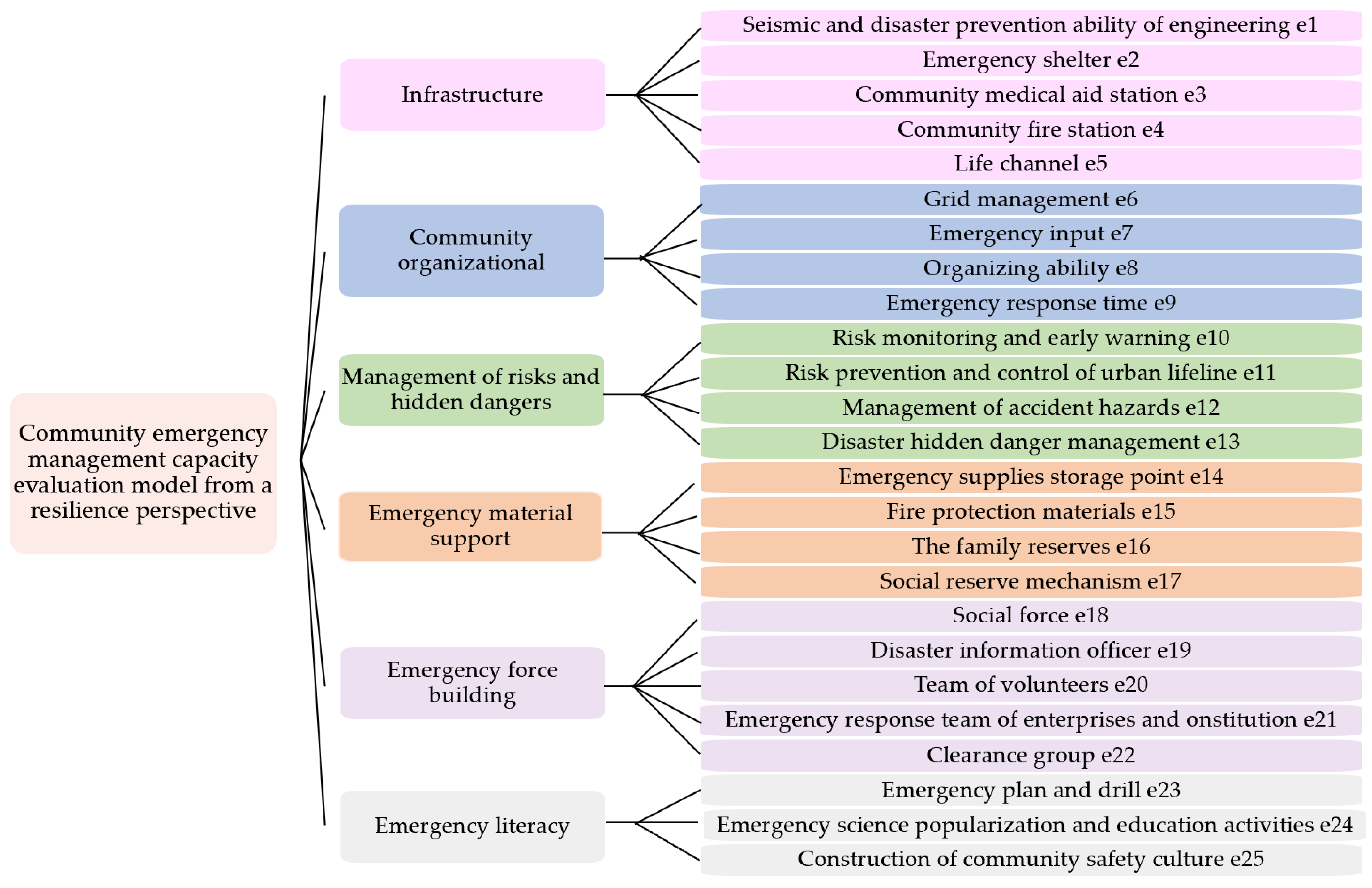
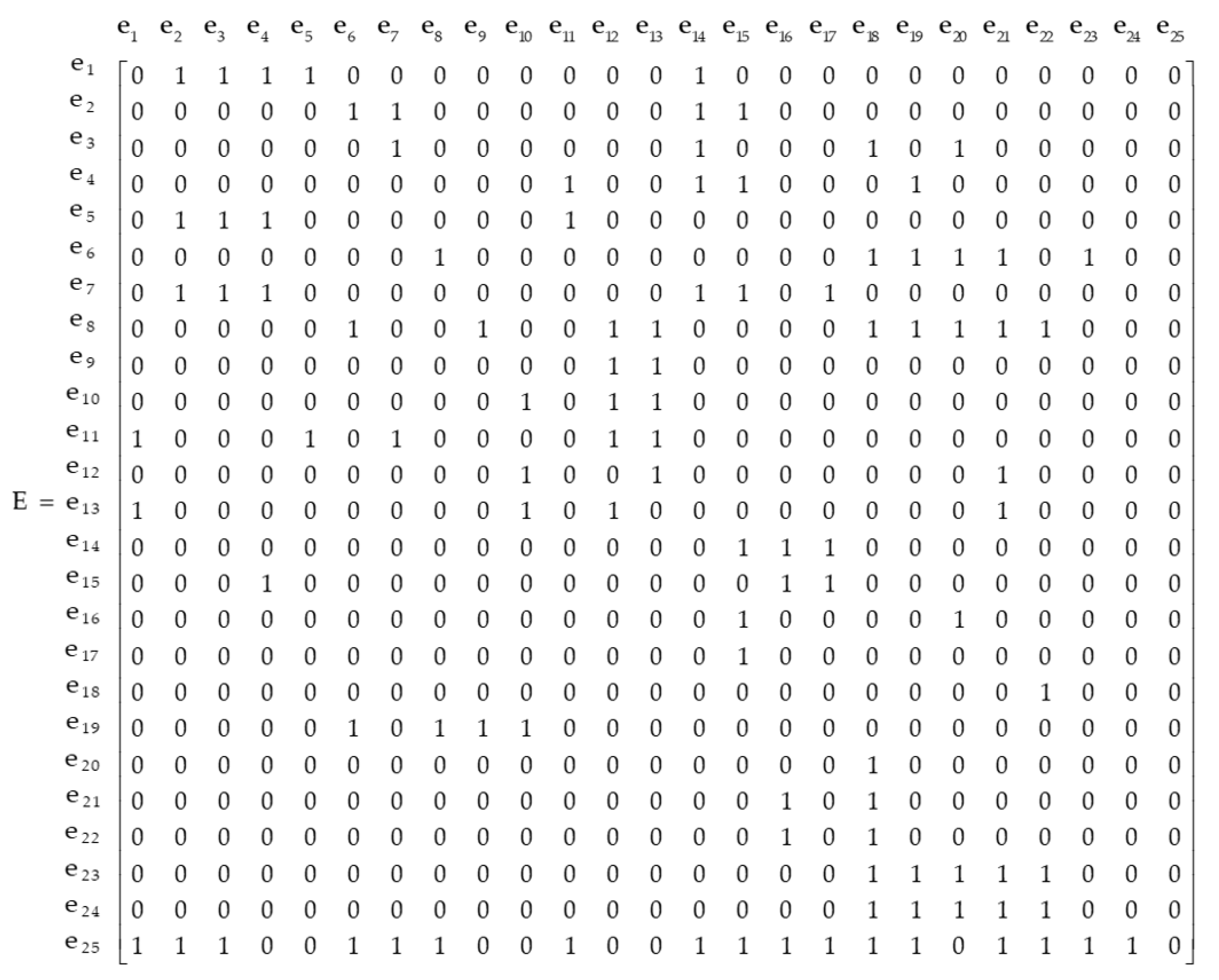
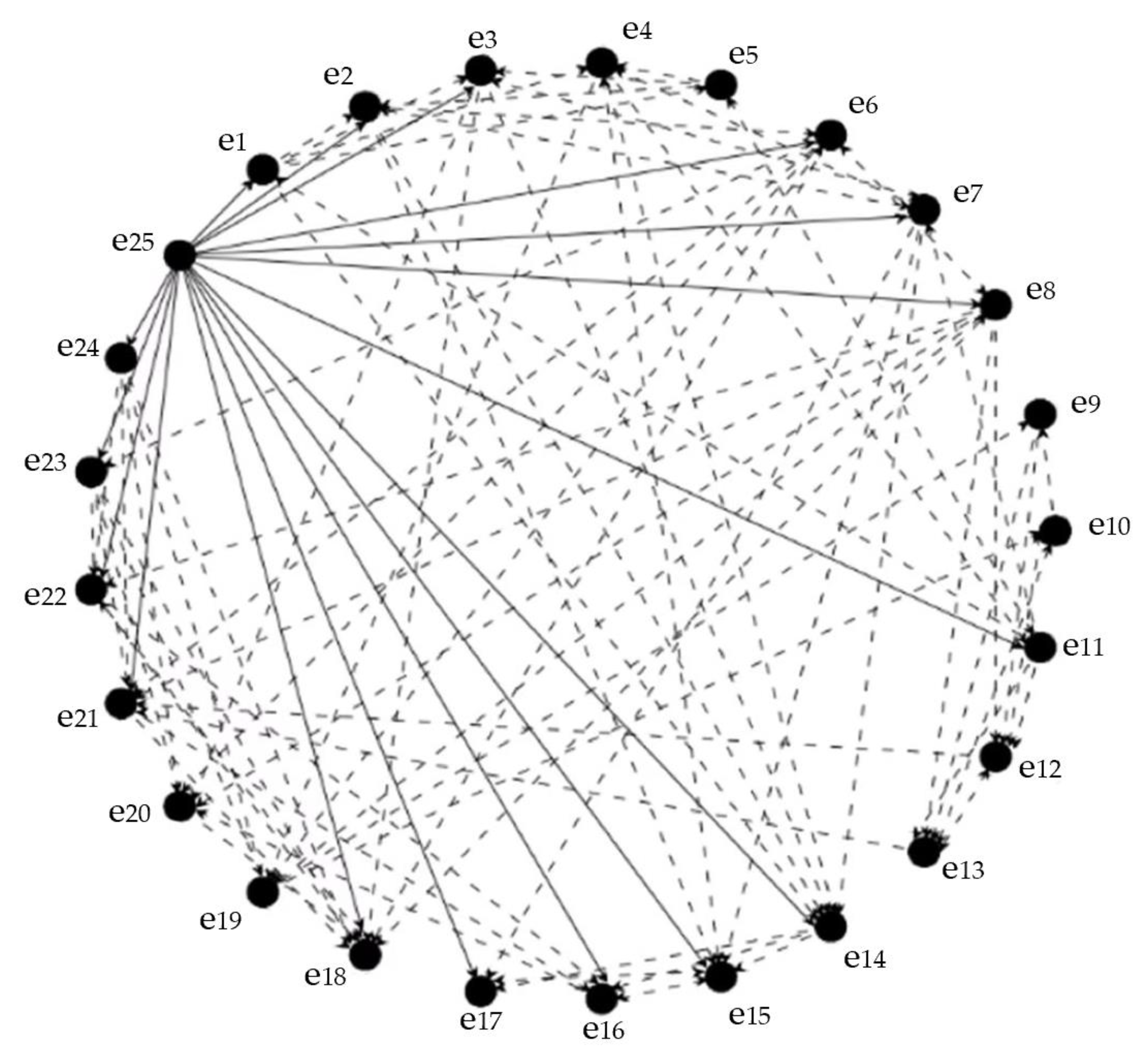
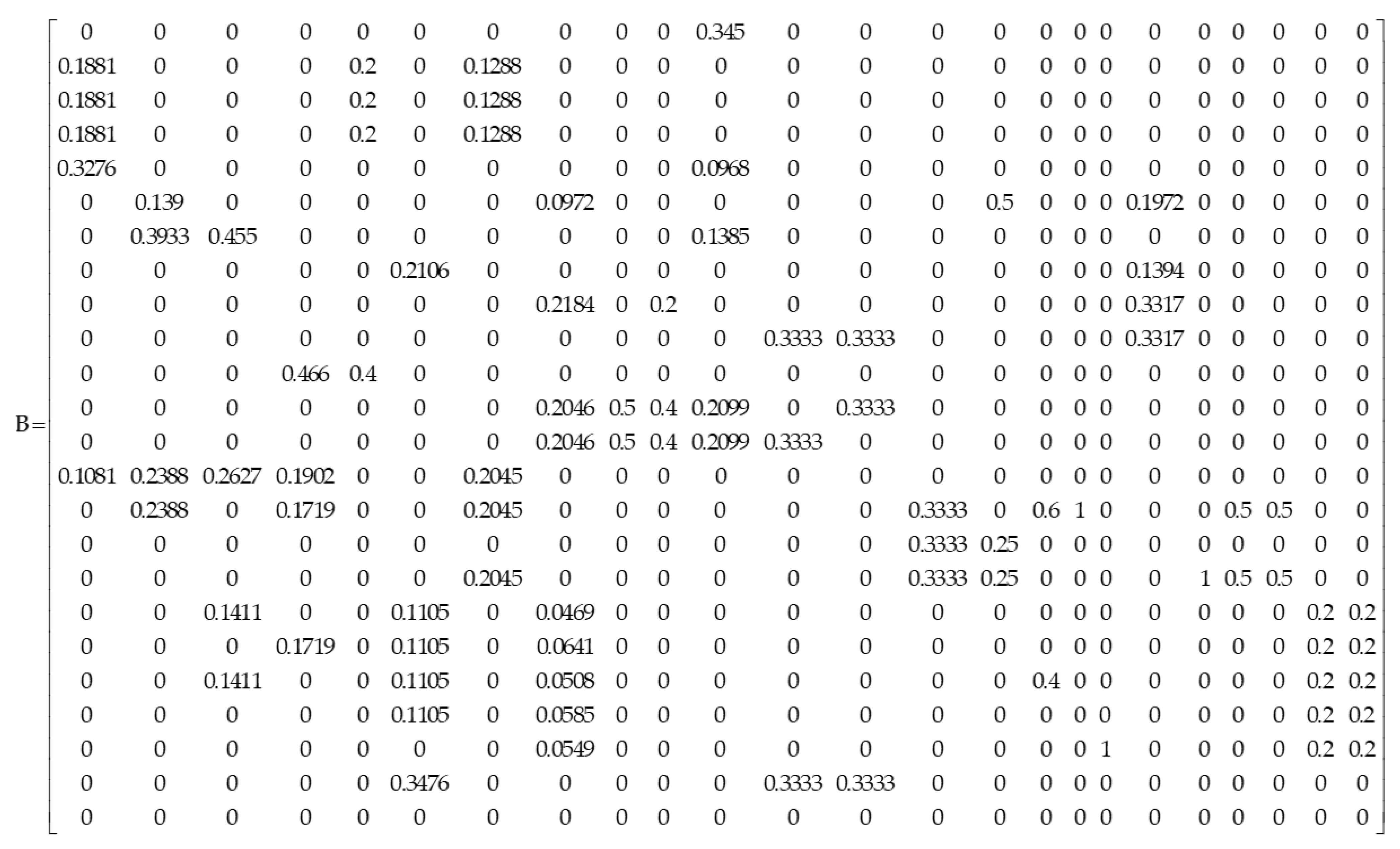
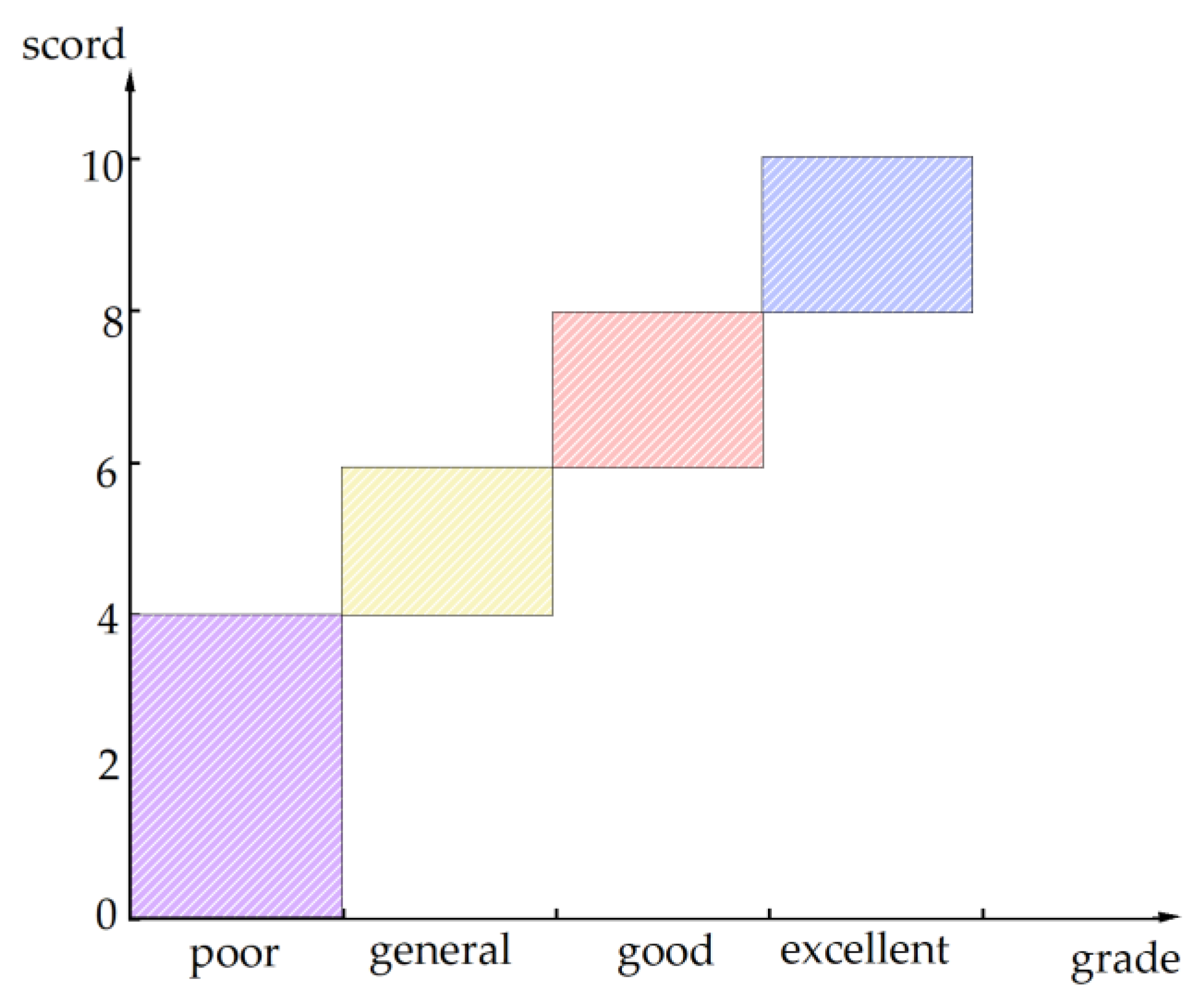
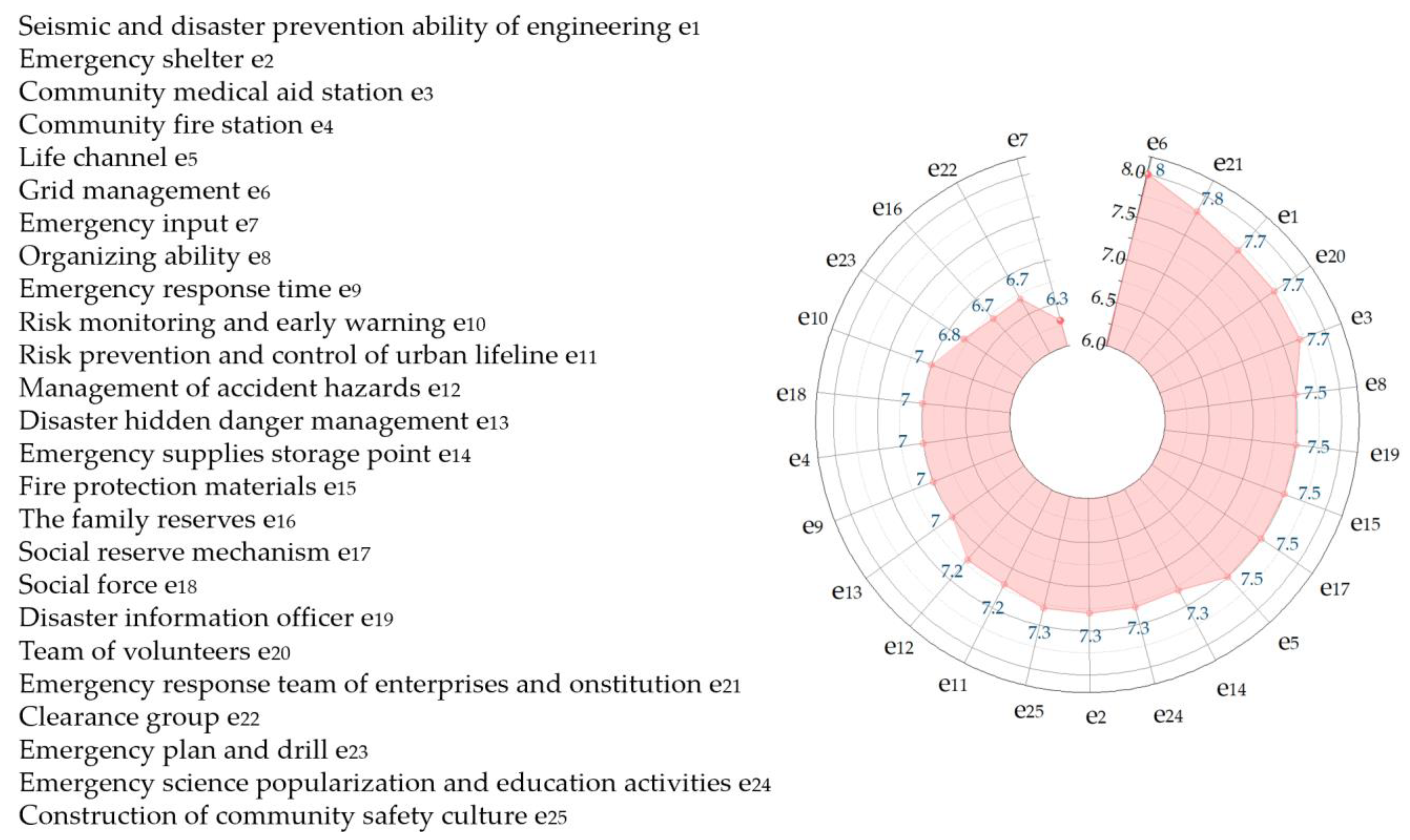
Disclaimer/Publisher’s Note: The statements, opinions and data contained in all publications are solely those of the individual author(s) and contributor(s) and not of MDPI and/or the editor(s). MDPI and/or the editor(s) disclaim responsibility for any injury to people or property resulting from any ideas, methods, instructions or products referred to in the content. |
© 2023 by the authors. Licensee MDPI, Basel, Switzerland. This article is an open access article distributed under the terms and conditions of the Creative Commons Attribution (CC BY) license (https://creativecommons.org/licenses/by/4.0/).
Share and Cite
Wang, K.; Feng, Y.; Deng, J.; Su, C.; Li, Q. An Evaluation Approach of Community Emergency Management Ability Based on Cone-ANP. Int. J. Environ. Res. Public Health 2023, 20, 2351. https://doi.org/10.3390/ijerph20032351
Wang K, Feng Y, Deng J, Su C, Li Q. An Evaluation Approach of Community Emergency Management Ability Based on Cone-ANP. International Journal of Environmental Research and Public Health. 2023; 20(3):2351. https://doi.org/10.3390/ijerph20032351
Chicago/Turabian StyleWang, Kai, Yuanyuan Feng, Jun Deng, Chang Su, and Quanfang Li. 2023. "An Evaluation Approach of Community Emergency Management Ability Based on Cone-ANP" International Journal of Environmental Research and Public Health 20, no. 3: 2351. https://doi.org/10.3390/ijerph20032351
APA StyleWang, K., Feng, Y., Deng, J., Su, C., & Li, Q. (2023). An Evaluation Approach of Community Emergency Management Ability Based on Cone-ANP. International Journal of Environmental Research and Public Health, 20(3), 2351. https://doi.org/10.3390/ijerph20032351





